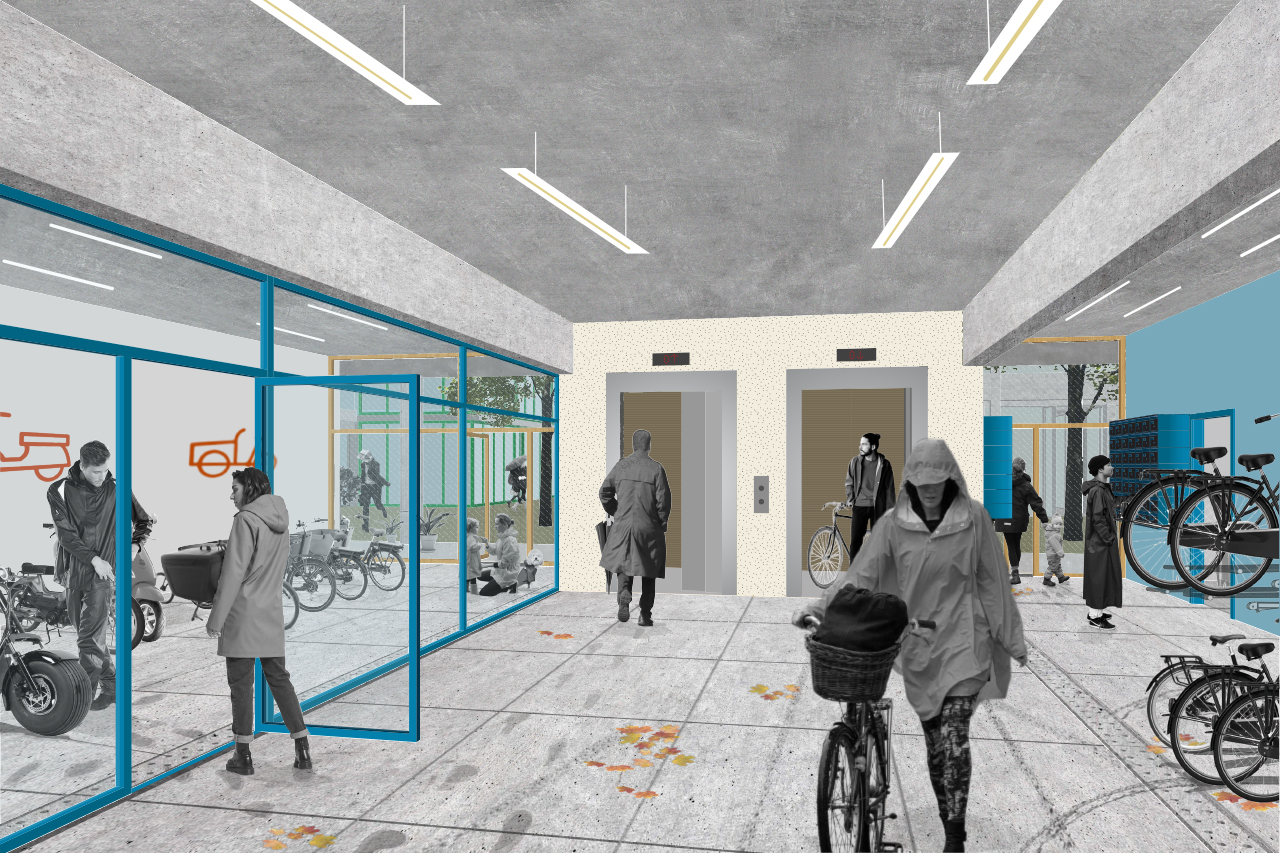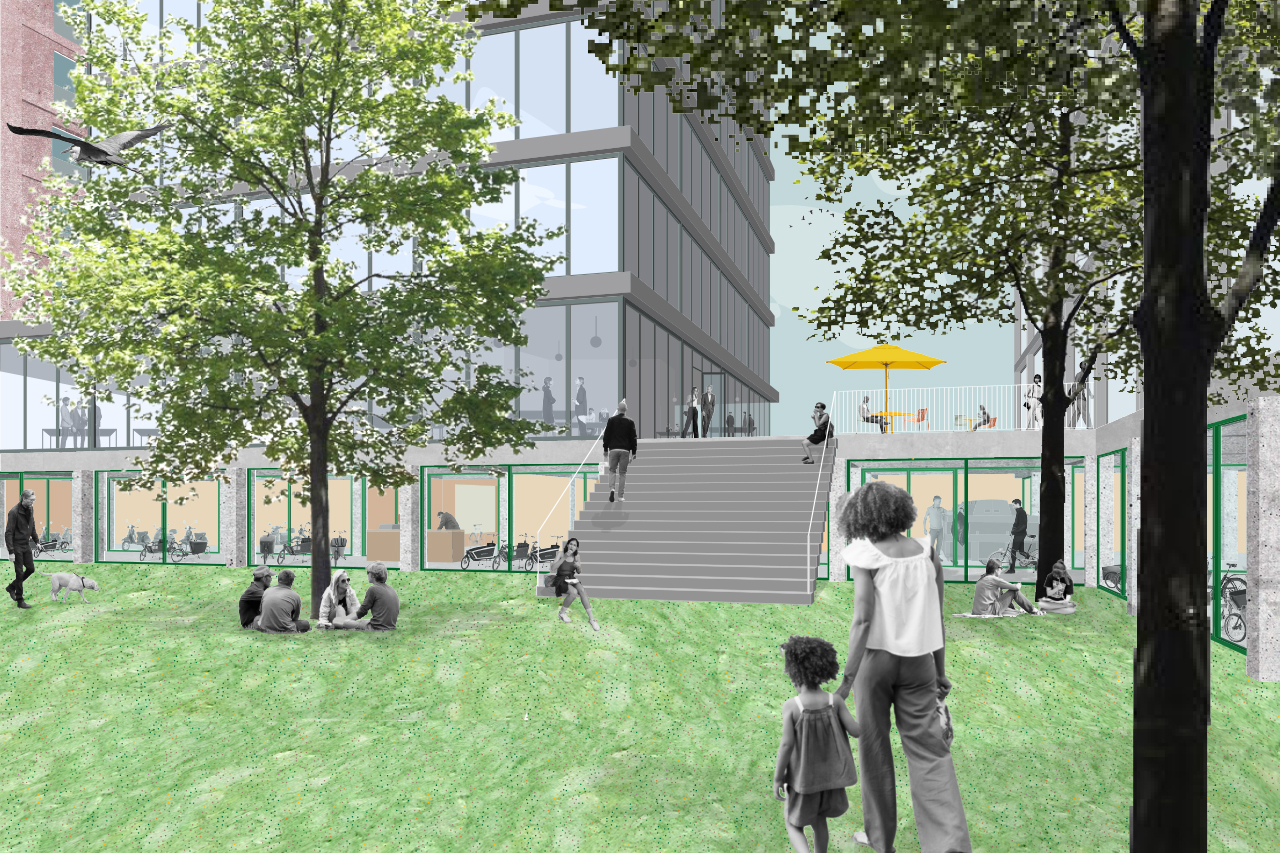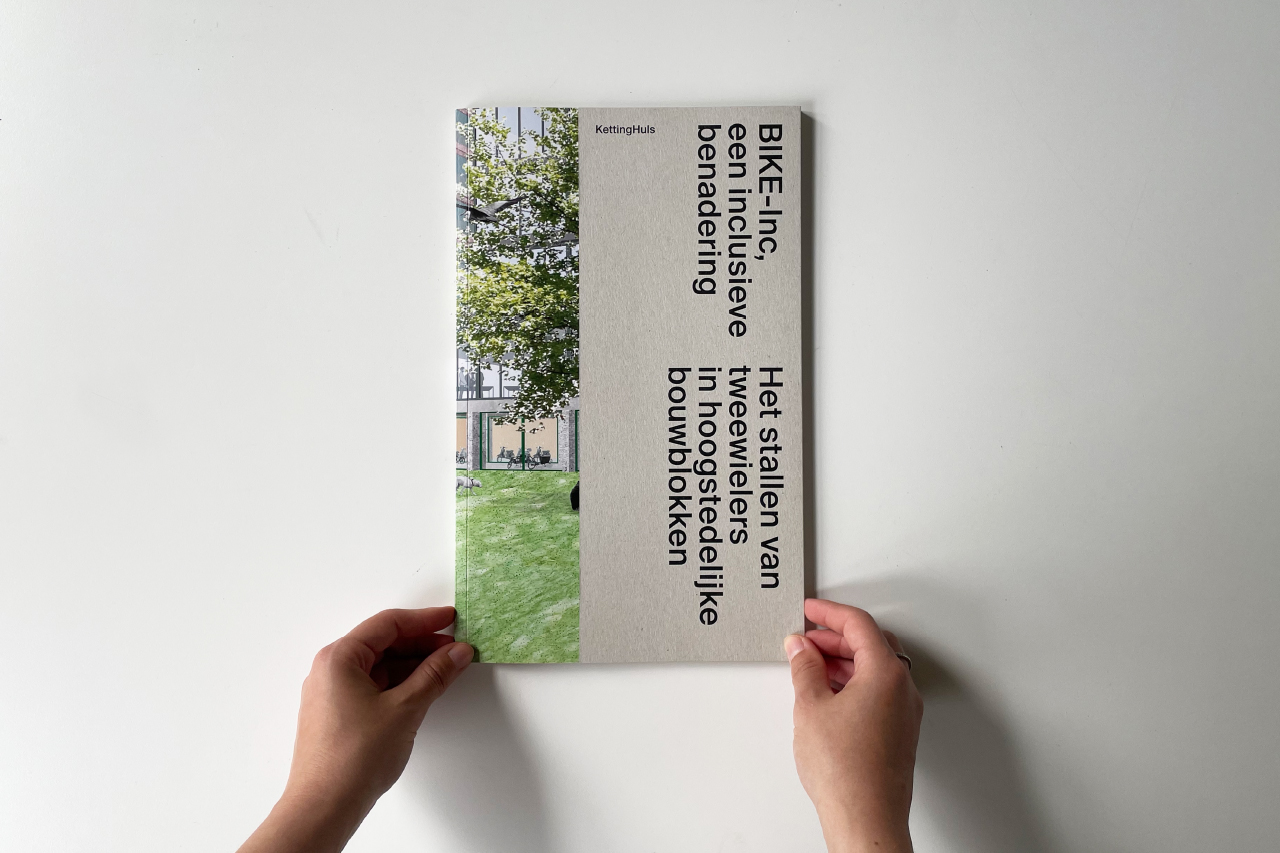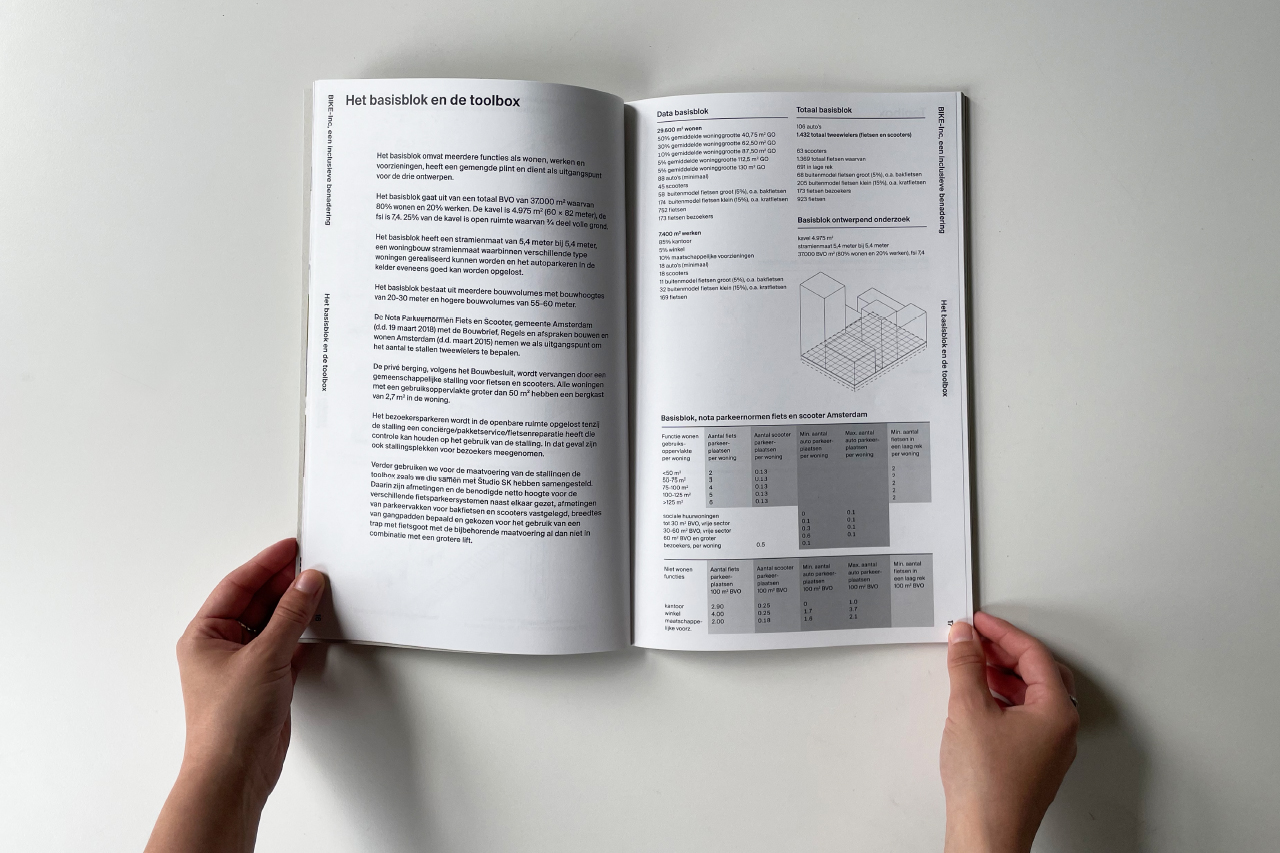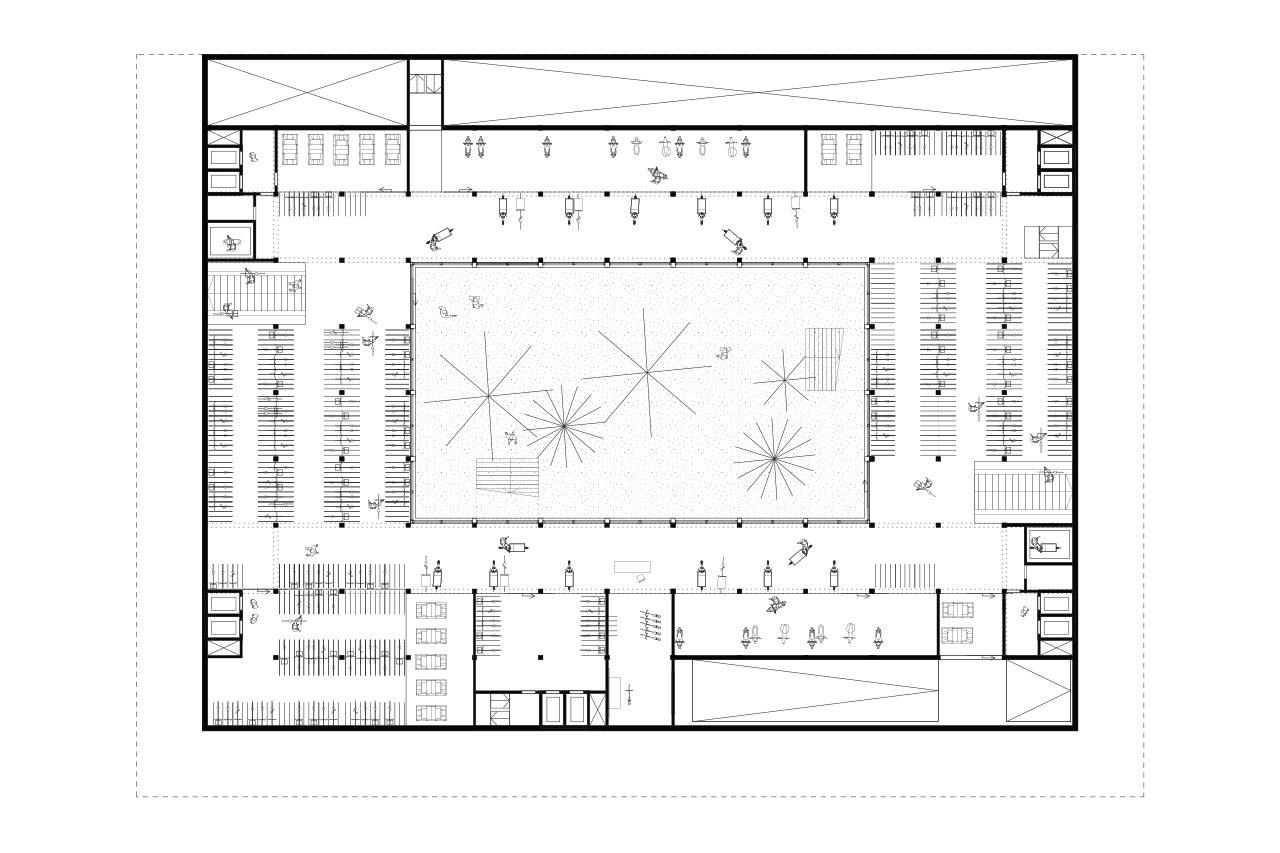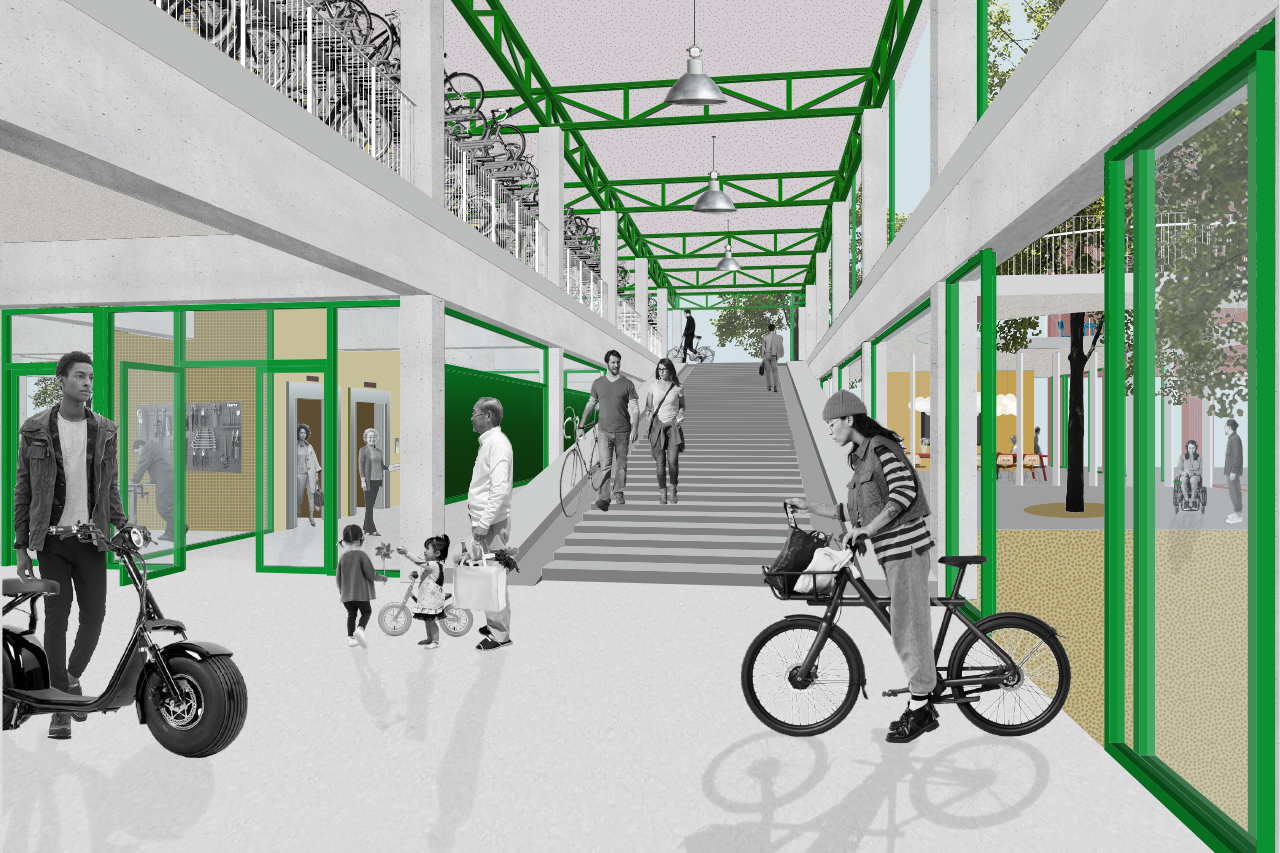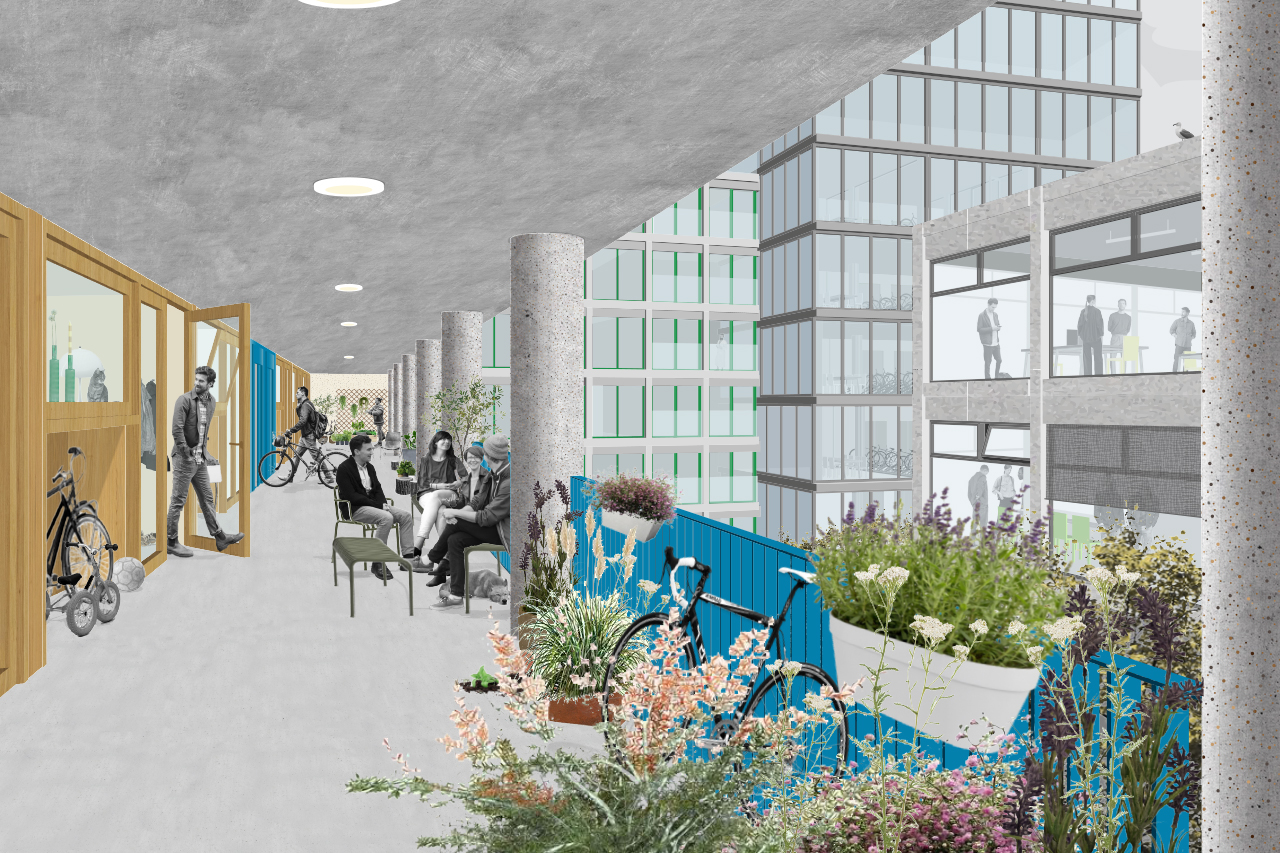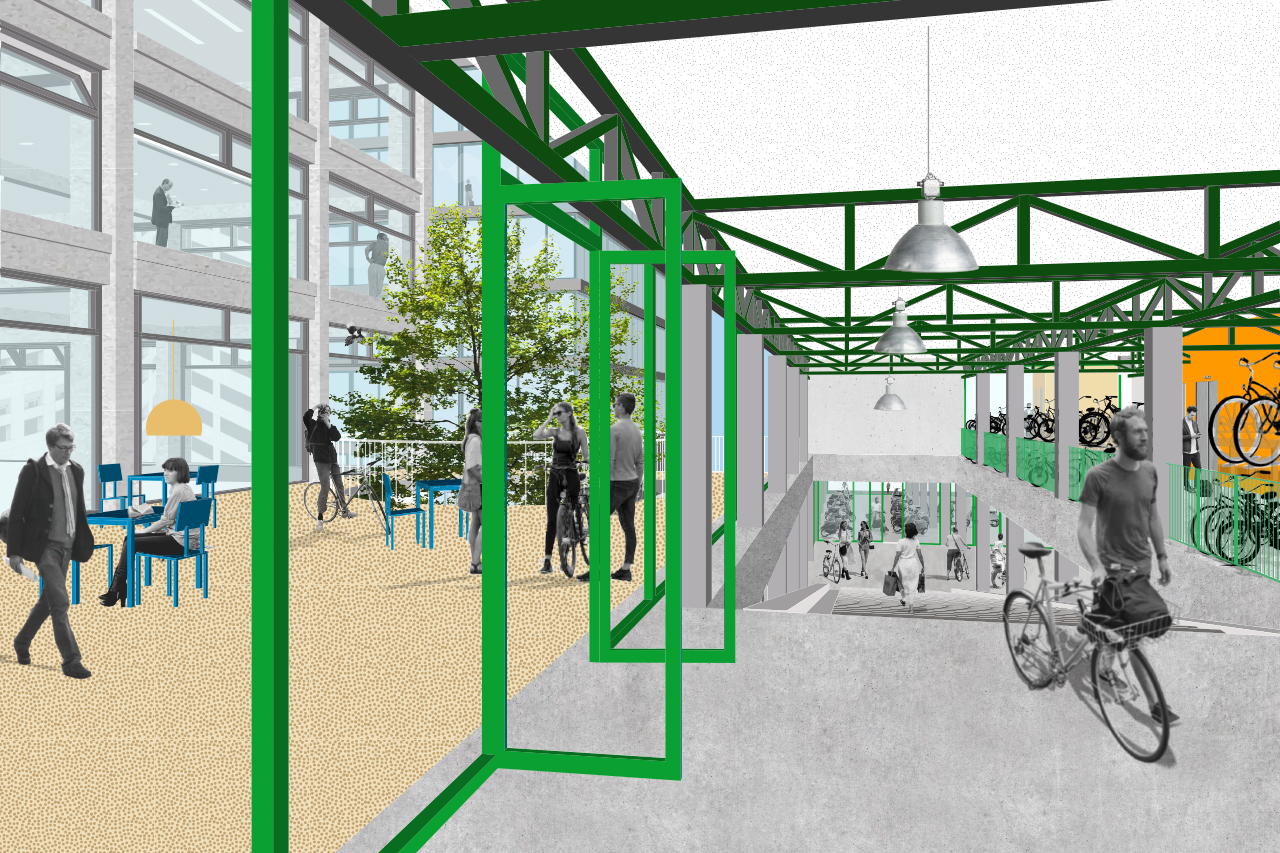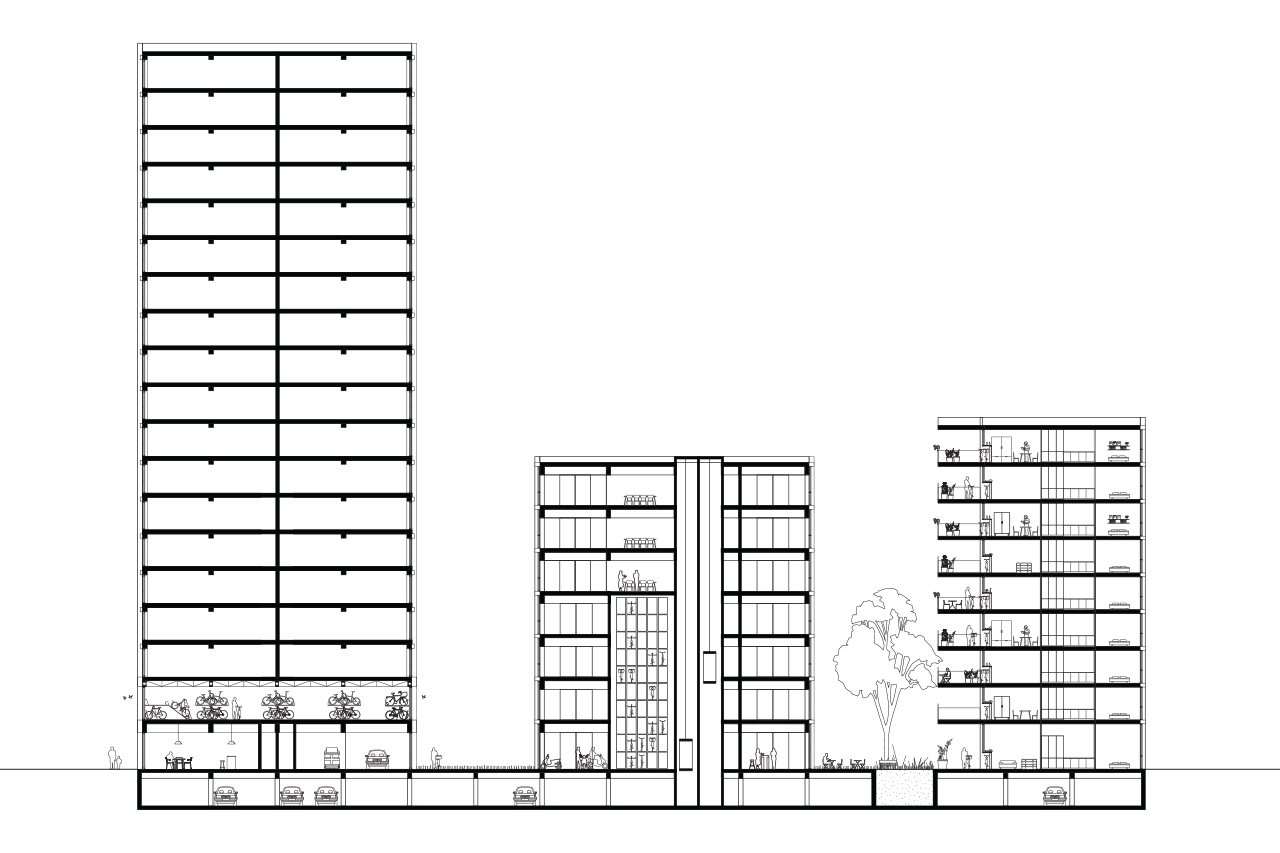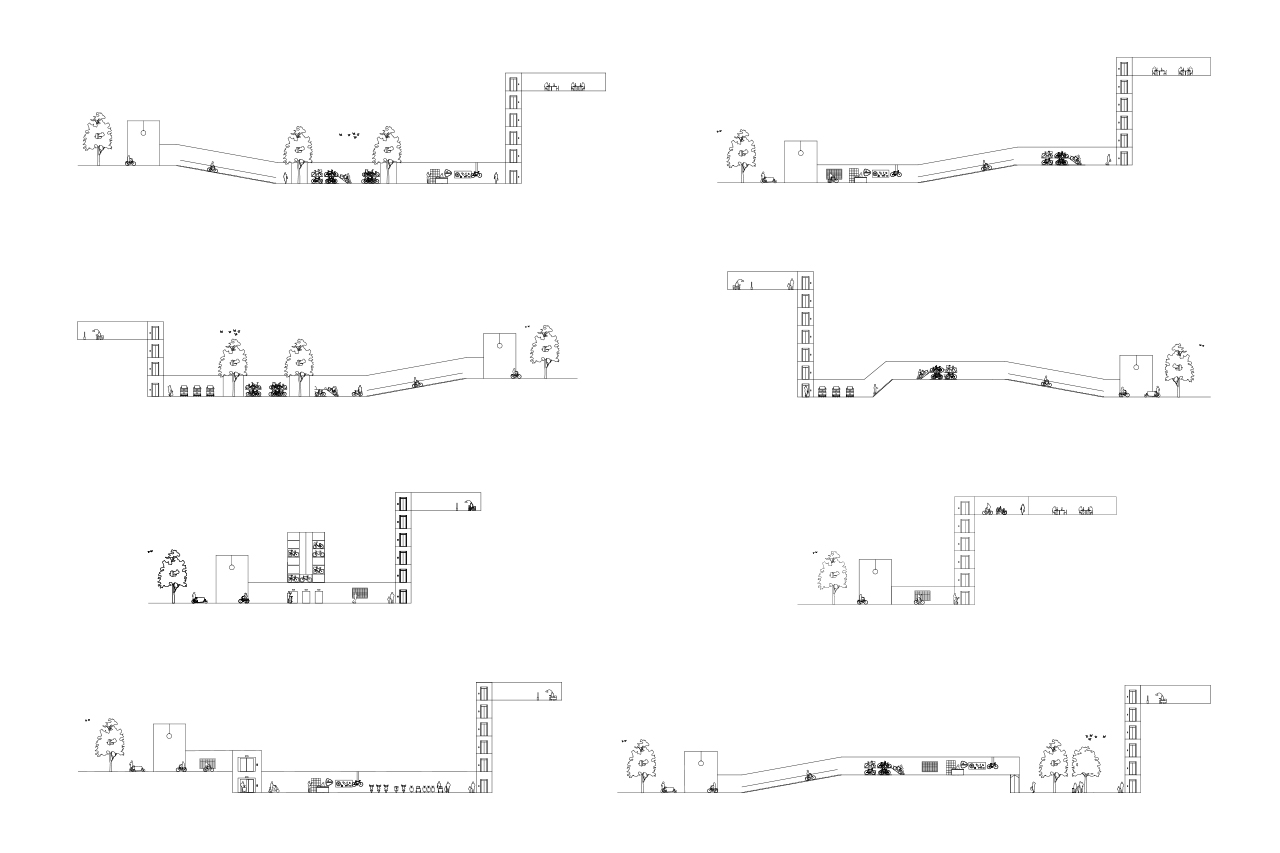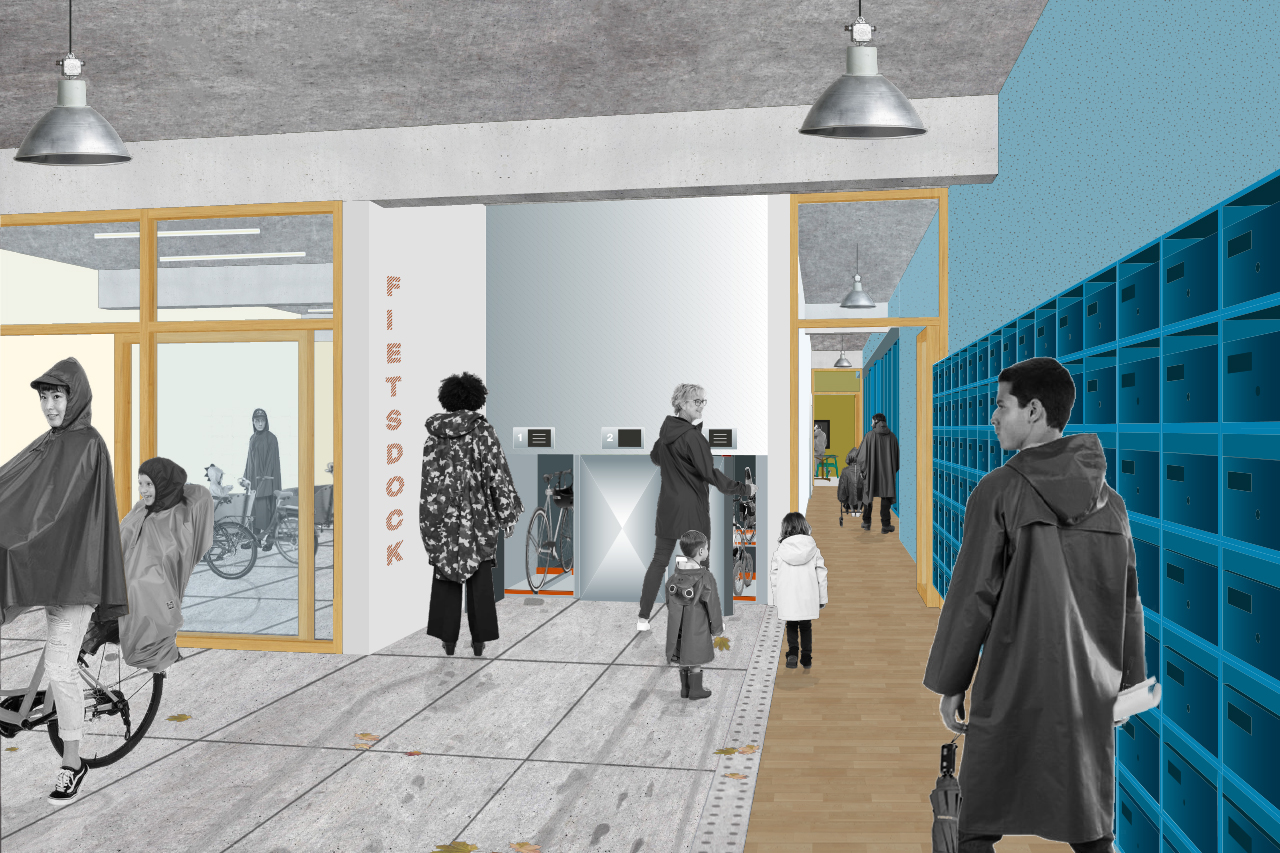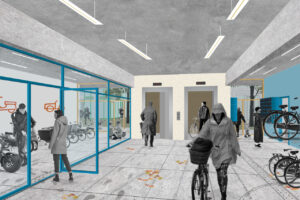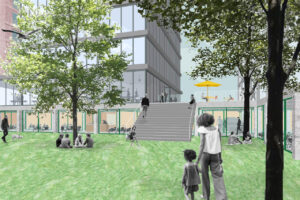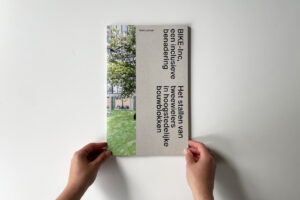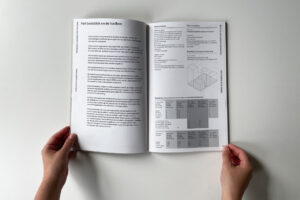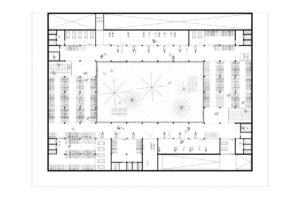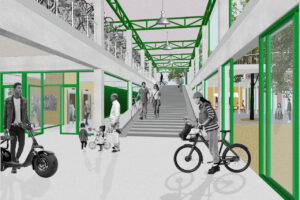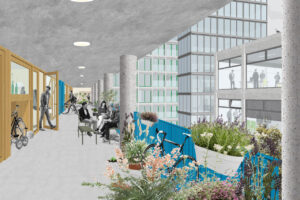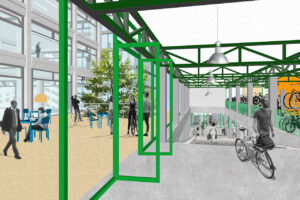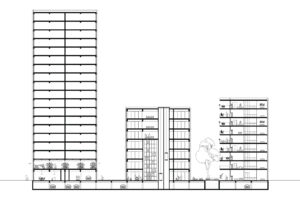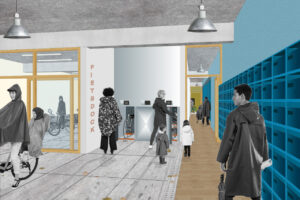BIKe-INC
Parking Two-Wheeled Vehicles in High-Density Urban Blocks | the Netherlands
KettingHuls has carried out research by design to support its plea for a new type of bicycle parking facility in metropolitan blocks. Rather than dark storage spaces, these ought to be inviting, welcoming spaces that make an important contribution to the accessibility and service level of buildings. The research by design was made possible by the Creative Industries Fund NL, Tour de Force, the City of Utrecht and the City of Amsterdam.
A new type of metropolitan block is finding its way into the expansion districts of the Netherlands: a closed urban block with a base of six to eight floors topped by high-rise construction up to 60-80 m, with occasional height accents of 150 m and a floor space index of between 5 and almost 10. Such blocks comprise a mix of functions – living (50-85 per cent) and working (50-15 per cent) – and have a high ground floor that can accommodate commercial or social programmes; their gross floor area is between 25,000 and 50,000 m2.
According to, for example, the Amsterdam Nota Parkeernormen Fiets en Scooter, this means that between 1,500 and 2,200 bicycles and around 100 scooters will have to be stored in such urban blocks. And these are certainly no longer the standard, traditional bicycles for which the width of 375 mm reserved for them in existing bicycle racks sufficed.
KettingHuls is convinced that this challenge needs to be met by looking for solutions that approach it in a totally different way.
We are of the opinion that, having learned the wise lessons of the post-war reconstruction of residential districts, we cannot continue to fill the bases of buildings in new, metropolitan residential districts with storage spaces entirely. Properly storing today’s wide variety of bicycles will require communal bicycle parking facilities measuring 2,000 m2 to 3,200 m2, which will cover half the footprint of the buildings. We do not believe that this is the solution.
That is why we advocate a new way of thinking about the position of bicycle parking spaces in residential buildings. Rather than dark storage spaces, these ought to be inviting, welcoming spaces that make an important contribution to the accessibility and service level of buildings. The quality of the space must be an incentive for its use and both the basement and the first floor must be taken into account in the design of hybrid, interesting and social bicycle parking solutions.
The research is published as a magazine: ‘BIKE-Inc, een inclusieve benadering’ and is sold at: Architectura & Natura, Naibooksellers, Motta Art Books.
| Project | Parking Two-Wheeled Vehicles in High-Density Urban Blocks, The Netherlands | |
| Client | Creative Industries Fund NL, Tour de Force, the City of Utrecht, the City of Amsterdam | |
| Design practice | KettingHuls | |
| Architect | Daniëlle Huls, Monica Ketting | |
| Period | 2020-2021 | |
| Status | Completed | |
| Team | Daniëlle Huls, Luïsa Jacobse, Monica Ketting, Enrique Orts Costa, Fabia Sainz Fernandez | |
| Programme | 29.600 m2 (gross floor area) housing, 7.400 m2 (gross floor area) working space, 106 cars and 2.400 m2 parking two-wheeled vehicles (63 scooters, 923 standard bicycles, 68 cargo bikes (5%), 205 bulky bikes (15%), 173 bicycles guests) |


